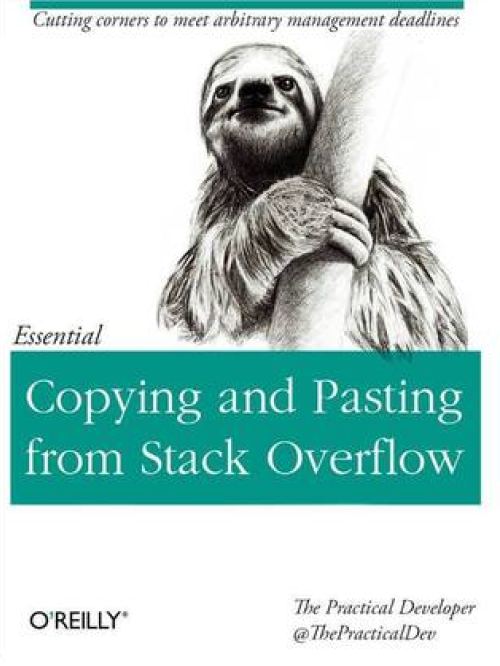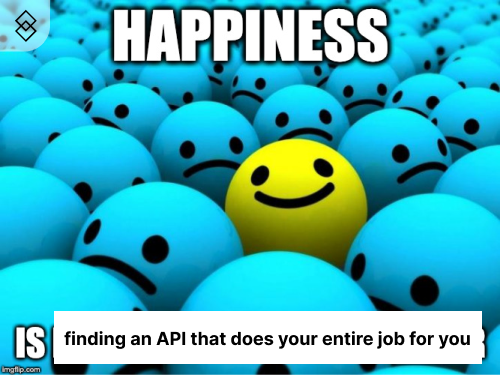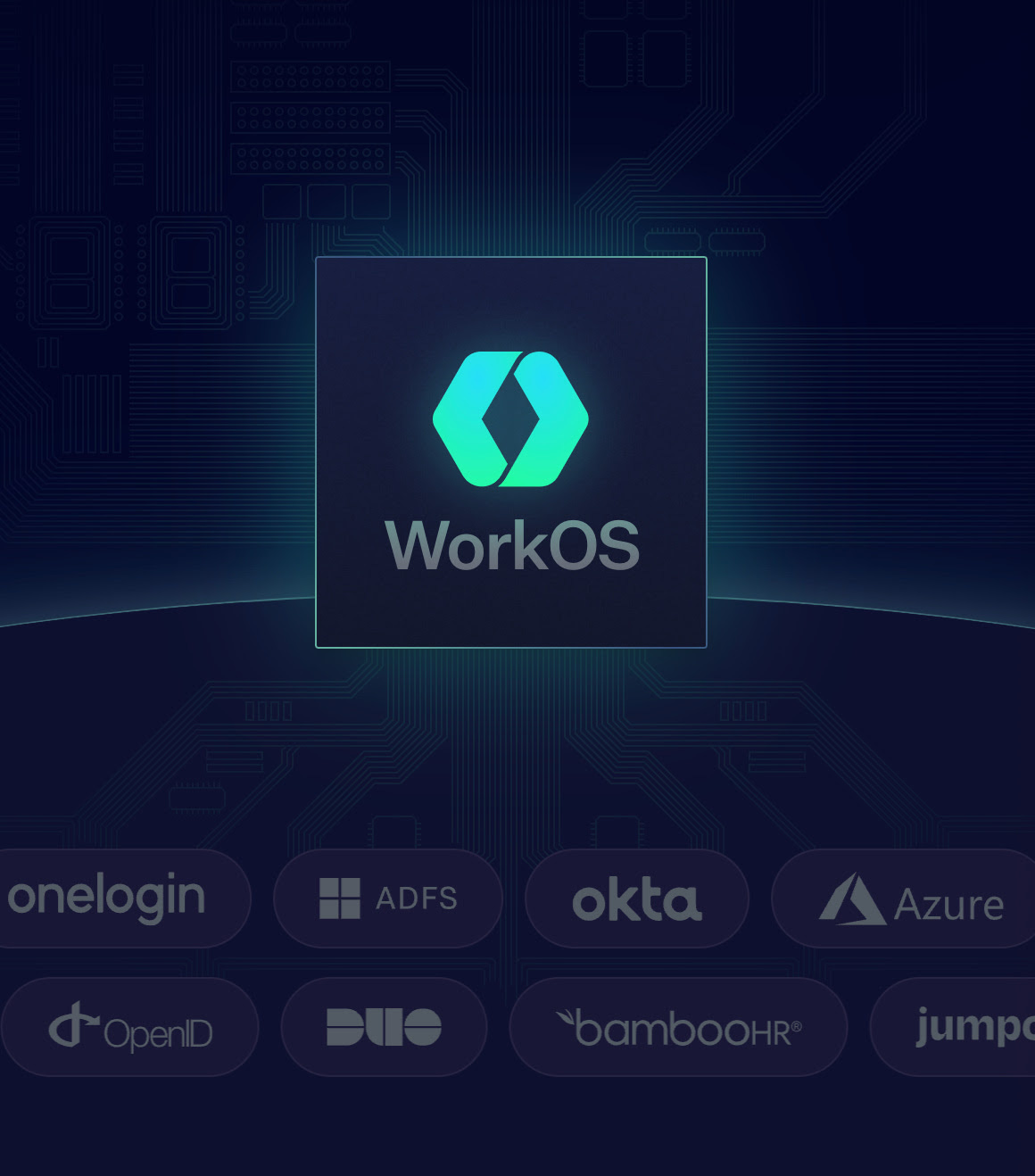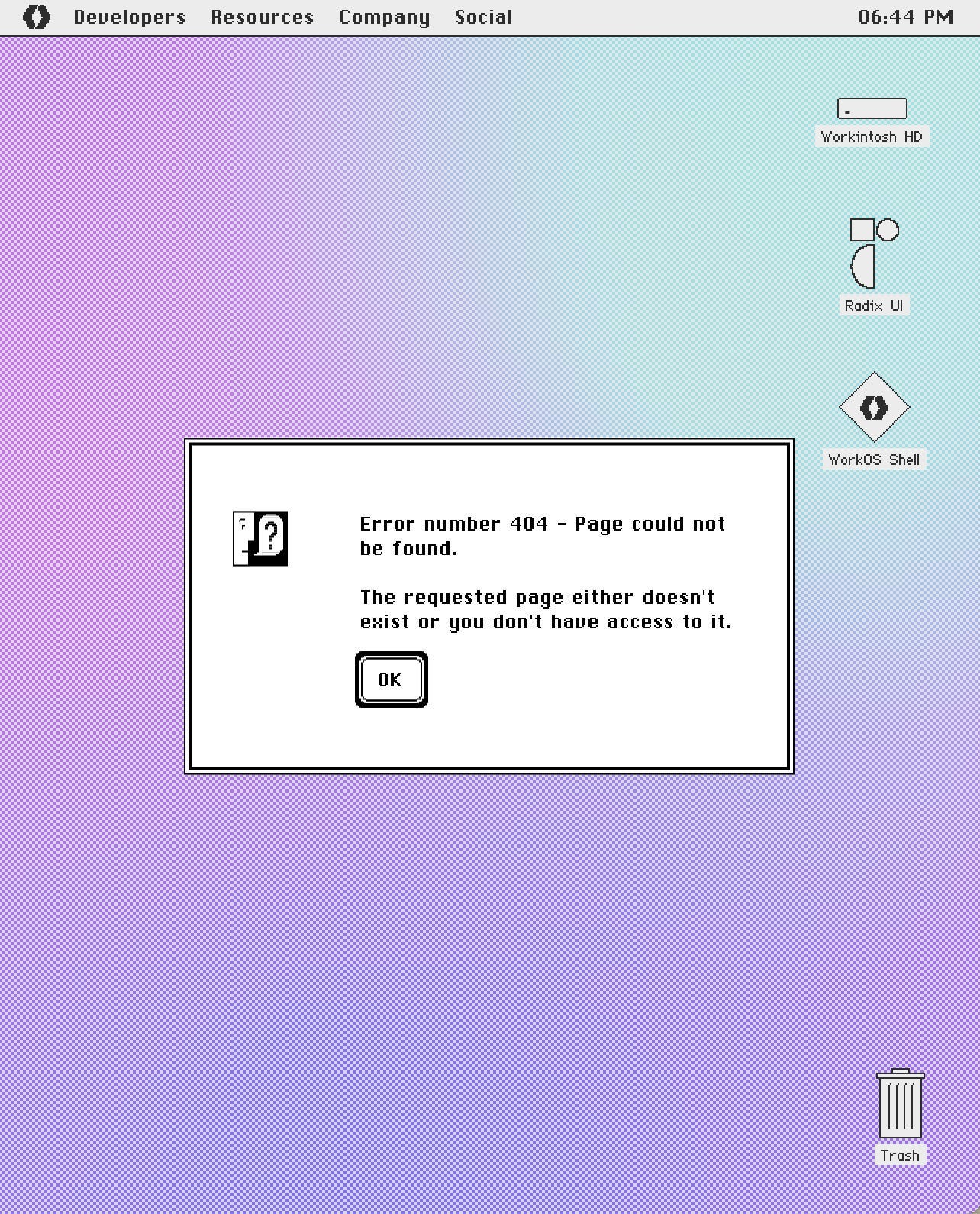Cross-post: Why You Should Join WorkOS

The Saas Admin cross-posted a post from Why You Should Join
My Perspective: Whether you're building an internal app for your company or a SAAS app to sell, you'll need to incorporate ways for your app to manage access, permissions, and more. Instead of reinventing the wheel, WorkOS is a great tool to quickly incorporate an admin portal, SSO, MFA, SCIM, Logs, and more into your application so you can focus on more critical features. (This is not a sponsored post)
Why You Should Join WorkOS
The API to increase your TAM.
ERIC ZHOU AND USMAN HANIF
Oct 22, 2022
As a startup, the most important customer you’ll ever close is your first enterprise. On top of a contract worth more than your salary as CEO, they’ll give you the social proof needed to win bigger clients, the promise to never churn, and a logo on your website your mom will finally recognize. As proof of accomplishment, your Slack message announcing the deal will receive more rocket ship emoji reactions than any message in company history. Welcome to the big leagues.

Getting to that point, unfortunately, is the hardest thing you’ll ever do. Closing an enterprise deal usually takes six to eighteen months. They’ll make you appease 11 individual stakeholders while navigating a decision-making hierarchy more complicated than the Hapsburg family tree. Since they’re your first enterprise client, they’ll grill you on your company’s longevity and capacity to scale.
Easily the biggest problem, however, are the feature requirements they’ll have. Every enterprise-scale company will require SSO, audit logs, and a host of other features needed to securely deploy software to their hundreds of employees. For the first time, you’ll find yourself spending many months and scarce engineering resources on features that have nothing to do with your core mission or value proposition.
As a result, you’ll find yourself in a catch-22:
- If you do build enterprise features, you’ll waste many months on features that don’t fundamentally improve your product. You’ll lose speed and focus, your two most valuable assets as a startup.
- If you don’t build enterprise features, you’ll never close any enterprise contracts. If you never close any enterprise contracts, you’ll never move upmarket and scale. If you never move upmarket and scale, you’ll eventually get cloned by Microsoft, who will.
In the past, when faced with such decisions, there was always some API you could leverage to avoid compromising. Stripe saved you from building payment features in-house. Scale saved you from labeling your own data. If only there were something similar for SSO, directory sync, and the million other features needed to be “enterprise-ready.”
Lucky for you, there’s WorkOS.
Background
WorkOS is building the platform to make startups enterprise-ready.
Being “enterprise-ready” means your product has the features large companies need to use it at their scale. For example, enterprises have lots of different employees using lots of different software products. To keep everything organized (and secure), they have a single, centralized portal (i.e. Okta) from which employees can sign into all of their tools. If you want large businesses to use your product, their employees have to be able to sign into it using that portal too. This feature requirement is known as single sign-on (SSO). That, alongside change management, role based access control, audit logs, and a ton of other features are all table stakes when selling to enterprise.
Instead of spending months building these features in-house, WorkOS’s API allows you to deploy these features with just a few lines of code. In the same way Stripe allowed you to enter the market by accepting payments, WorkOS allows you to move upmarket by selling to larger customers.

Concretely, WorkOS creates value by allowing startups to preserve their two most valuable assets:
Speed
Building enterprise features takes a long time, which slows down core product development and go-to-market. WorkOS preserves a startup’s speed by letting them ship enterprise features in three days instead of three months.
Focus
Building enterprise features is distracting. They don’t touch on the core value proposition, help the end-user, or advance the mission. Spending too long on them carries both the opportunity cost of not building additional, differentiating features and the cultural cost of lowering morale: engineers signed on to make an impact, not build internal tools. WorkOS preserves a startup’s focus by letting them skip enterprise feature development to spend time on their product and mission instead.
WorkOS currently offers APIs around SSO, Directory Sync, Audit Logs, and Magic Link Sign-On. Each API bundles and simplifies the underlying complexity of a feature, making it easier to build. The SSO API, for example, provides a unified interface to integrate with almost thirty different identity providers.
WorkOS charges $49 per month per connection for each feature. This means that if you have 5 enterprise clients using both SSO and Directory Sync, you’d pay $490 per month. As a result, WorkOS’s growth is the aggregate sum of their customers’ growth: as their users (other software companies) grow and close more enterprise clients, WorkOS also grows.
WorkOS launched publicly in March of 2020 and already counts over 200 fast-growing startups as customers. High-profile users include Vercel, Webflow, Hopin, Loom, and PlanetScale. It’s been extremely popular with early adopters: Guillermo Rauch, co-founder and CEO of Vercel, once noted that he’d quit if they ever got to a point where they had to build WorkOS’s features in-house.
The company was founded in 2019 by Michael Grinich, an experienced entrepreneur who was previously co-founder and CEO of Nylas. Nylas has raised $175 million and also makes APIs to help companies integrate with email clients, calendars, and contact lists.
On the grounds of their impressive founder, traction, product, and team, WorkOS raised an 80 million dollar series B in 2022 led by Greenoaks Capital. They previously raised a 15 million dollar series A led by Solo VC Lachy Groom and a seed round led by Lightspeed Venture Partners. Other institutional investors include First Round, SV Angel, Abstract Ventures, Tuesday Capital, Worklife Ventures, and Audacious Ventures. Other individual investors include Howie Liu (Co-founder/CEO of Airtable), Guillermo Rauch (Co-founder/CEO of Vercel), Waseem Daher (Founder/CEO of Pilot), Jack Altman (Co-Founder/CEO of Lattice), Mathilde Collin (Co-Founder/CEO of Front), and Shreyas Doshi (Product God).

WorkOS’s excellent product, strong traction, and stacked team make them an exceptional startup. But are they a category-defining business?
We think they have the potential to be.
In this piece, we’ll dig deeper to see why this is the case. We’ll look at how they’re targeting a massive, globally important market. We’ll look at how they’re well-positioned to become a leader in that market. We’ll look at how they stack up against the competition, and why their team is perfect to execute on this opportunity. And we’ll do it all as thoroughly as we can.
Ready? Let’s begin.
Opportunity
We’ll begin our analysis of WorkOS like we do for all of our companies, from a first principle:
In order for a company to become massive, it must become a leader in a massive, growing market.
Many companies with clear product-market fit don’t become truly massive because they don’t meet this condition. Thus, we must establish two things:
- WorkOS operates in a massive, growing market.
- WorkOS will become a leader in that market.
A Massive, Growing Market
WorkOS operates in a new category of developer APIs focused on enterprise-readiness. Concretely, their market consists of companies who will pay to accelerate development of enterprise-specific feature requirements. We believe this to be a massive market for the following reasons:
EVERYBODY needs to build enterprise features. This is because everybody needs to move upmarket. If you don’t, you’ll find it difficult to scale your business:
- Ignoring churn, a $25M ARR B2B SaaS startup with an average selling price of $1000 will need to find 25,000 new customers per year to double. Ignoring outliers, this level of lead volume is difficult to generate; landing a smaller number of larger customers is a much more realistic path for growth. There’s a reason the 73 SaaS companies that IPOed most recently had an average customer contract value of $234k.
- Accounting for churn, staying downmarket gets worse. SMBs switch products more often because switching costs are low. They go out of business more often because they’re less stable. As a result, they churn at an average rate of 31%-58% per year, whereas enterprises churn at an average rate of 6%-10%. Moving upmarket allows you to grow and compound revenue more consistently.
- Accounting for upsell opportunities, going upmarket gets better. Once you’ve got one team using your product in an enterprise, you can “land and expand” your way across the organization, driving further revenue. This vector for growth doesn’t exist in smaller companies.
- If you don’t move upmarket, you’ll eventually get cloned and killed by Microsoft, who will.

NOBODY wants to build enterprise features. This is because:
- Enterprise features carry a high direct cost. In 2019, it took Stack Overflow three engineers over three months to implement an initial version of SSO, with the team still working to “strengthen and improve” integrations afterwards. Hiring a team to build and maintain enterprise features costs lots of time and money.
- Enterprise features carry a high opportunity cost. You could have built differentiating, problem-solving features instead of spending valuable product and engineering resources on features that don’t actually help your end-user.
- Enterprise features carry a high cultural cost. They distract you from focusing on your mission and end-user. They slow down product development with their complexity and dependence on legacy systems. They lower team morale; no one wants to take them on since they’re boring and have low visibility/perceived impact.

Since every company has to build enterprise features but no company wants to build them, pretty much every startup stands to benefit from WorkOS. That’s about as big of a market as you can get.
It’s a growing market as well, for the following reasons:
Startups are building more software than ever.
There are more startups than ever trying to go upmarket and sell to enterprise. Although there aren’t exact numbers for this, helpful proxies include how many successful startups (unicorns) there are and how much startups are raising from investors:
- There are almost 1200 unicorn startups today, with the vast majority being formed in the last few years. Even ignoring 2021 (the obvious outlier), there’s a clear upwards trend:

- In 2021, startups raised a collective $330 billion, the most in history. In 2022, venture funds themselves have already raised a collective $137.5 billion, positioning them to smash 2021’s record of $142 billion.More startups and more capital means more companies building enterprise features to move upmarket.
Enterprises are buying more software than ever.
Global software spending is expected to grow at a CAGR of 10.3% between 2021 and 2023. This is more than two times faster than overall IT spending will grow, which is forecast to be 4.4%. The application software market in particular will grow at a CAGR of 11.4% between 2022 and 2023 to exceed $400 billion.
Market Leadership
WorkOS isn’t the only company helping startups achieve enterprise readiness. There are already a number of point solutions offering support around specific features (i.e. Auth0 with SSO). Even so, we believe WorkOS will end up as a firm leader in the market for the following reasons:
- WorkOS is building the best product in the space.
- WorkOS is building the best company in the space.
The Best Product
In the software API business, having the best product means you have the best developer experience.
API companies almost never sell proprietary technology. There’s nothing stopping you from building your own payments, SMS, and enterprise features in-house. Most startups just realize they’d rather spend their time, money, and energy on more mission-critical features.
Rather, API companies sell a superior developer experience. They offer you a faster, cheaper, and easier way to skip over building/maintaining the irrelevant stuff you don’t want to do yourself. Whichever product lets you do it the fastest, cheapest, and easiest is therefore the best.

WorkOS understands this principle deeply: Michael told us that their north star metric is “developer joy.” Their platform-level approach is the key to this.
WorkOS the Platform
As mentioned earlier, being “enterprise-ready” requires building a number of different features. While there are plenty of point solutions targeting individual features, WorkOS is the first company tackling them all. This platform-level approach allows them to provide a superior developer experience on two fronts:
Faster Development
In the same way that going to Costco is faster than going to a bakery, a butcher, and a farmers market, building on WorkOS is faster than stacking multiple point solutions.
Using the same SDKs, API access patterns, end-user lists, and documentation makes integrating another WorkOS feature 10x faster than starting fresh by building in-house or working with a new 3rd party provider.
Lower Overhead
In the same way that managing your utility company is easier than managing a water, trash, and electric company, building on WorkOS is easier than stacking multiple point solutions.
Using the same management account, support team, and dashboards makes maintaining another WorkOS feature 10x cheaper than starting fresh by building in-house or working with a new 3rd party provider.
This is a tried and true strategy. It’s easier to use Stripe than separate providers for payments, invoicing, and fraud detection. It’s easier to use AWS than separate providers for compute, databases, and storage. It’s easier to use Twilio than separate providers for SMS, video, and voice.
Even though it’s still early for WorkOS’s platform, their customers have already benefited from their bundled approach. Consider the following unicorn customers:
- Vercel uses WorkOS’s SSO, Directory Sync, and Admin Portal features. It took them 1 month to integrate everything.
- Hopin uses WorkOS’s SSO and Directory Sync features. It took them 2 weeks to integrate everything (as opposed to the 2 months they estimated it would take in-house).
- Webflow uses WorkOS’s SSO and Admin Portal features. It took them 2 days to integrate everything (as opposed to the 3 months they estimated it would take in-house).
The Best Company
How did WorkOS build the best product in the space? They had the best team building it. Specifically, they have a team that knows a lot about creating great developer experiences:
Michael Grinich - Founder, CEO
Michael previously served as co-founder and CEO of Nylas. Nylas has raised $175 million and also makes APIs to help companies integrate with email clients, calendars, and contact lists. Michael holds a B.S. in Computer Science from MIT and was part of the Forbes 30 under 30 list for enterprise software in 2016.
Alon Levi - VP, Engineering
Alon previously served as SVP of engineering at Slack and Salesforce. He was also previously head of engineering at Quip, an engineering manager at Dropbox, and a tech lead at Google.
Zeno Rocha - VP, Developer Experience
Zeno previously served as Chief Product Officer at Liferay Cloud, a 1200 person company. Outside of work, he’s a prolific builder and thought leader.
Beyond having a significant amount of experience building products for developers, everyone on the executive team is an experienced developer themselves, giving them deep empathy for WorkOS’s users.
Bonding everyone further is a shared culture of craftsmanship. Use their product and you’ll be struck with all the extra steps they’ve taken to make your experience delightful. The little “Going Live” checklists they include with each of their features. The test instances they provide for different identity systems, allowing developers to test implementations immediately in local environments. The beautiful WebGL graphics sprinkled throughout their home page and their cute new 404 page. The fact that their Node.js SDK includes default support for TypeScript.


Enterprise features are boring. They’re complicated and regularly interface with legacy systems. When building their product, WorkOS had no need to push or challenge this perception.
Yet, in everything they’ve done, there’s this strong sense of purity and aesthetic. A reminder that done right, even the most boring of software features can display integrity and artistry.
We respect that.
Competitive Landscape
We’ve spent some time analyzing WorkOS’s unique strengths as a product and company. Now, let’s have a look at how they stack up against other potential solutions for accelerating enterprise-readiness.
Point Solutions
In contrast to WorkOS’s bundled, platform-level approach, there are a number of point solutions offering support around specific features. For example, Auth0, OneLogin Unified Access Management Platform, Okta Identity Cloud, AWS Cognito, and GCP Identity Platform are each alternative providers for SSO.
In this case, point solutions get beat by platform solutions both on product and distribution:
- On product, platform-level approaches provide a better developer experience. As we discussed above, they offer faster development and lower overhead: once you’ve integrated your first WorkOS feature, it’s 10x to integrate and maintain another as opposed to stacking a separate third party provider. When picking a long-term partner, this is absolutely something that developers consider.
On distribution, platform-level approaches have more vectors for entry. Each feature - SSO, Directory Sync, Audit Logs, Role-Based Access Control - is a separate wedge into a customer organization. Customers might start using WorkOS for directory sync before deciding they also need help with audit logging. This flexibility on value proposition isn’t something point solutions have available to them.
For example, Loom originally came to WorkOS for their directory sync feature. When their Auth0 contract came up, they liked using WorkOS so much that they switched their SSO to WorkOS as well. Today, Loom’s biggest customers all use WorkOS.
Platform Solutions
Platform solutions beat point solutions both on product and distribution. While WorkOS defined and leads this category today, competitors have already begun springing up. For example, London-based BoxyHQ raised 2.5 million last year to build something similar.
While the market will be big enough for several large players, WorkOS’s almost 2-year head start has given them time to dig a few moats. The sheer number of legacy integrations they’ve already researched and built, the inroads they’ve already made with the fastest growing customers, the developer-friendly brand they’ve begun building around themselves, and the talent network effect they’ve begun to accrue all make it likely that they retain their market leadership.
If you found this guide helpful, please share & subscribe to stay updated on new articles!
Member discussion